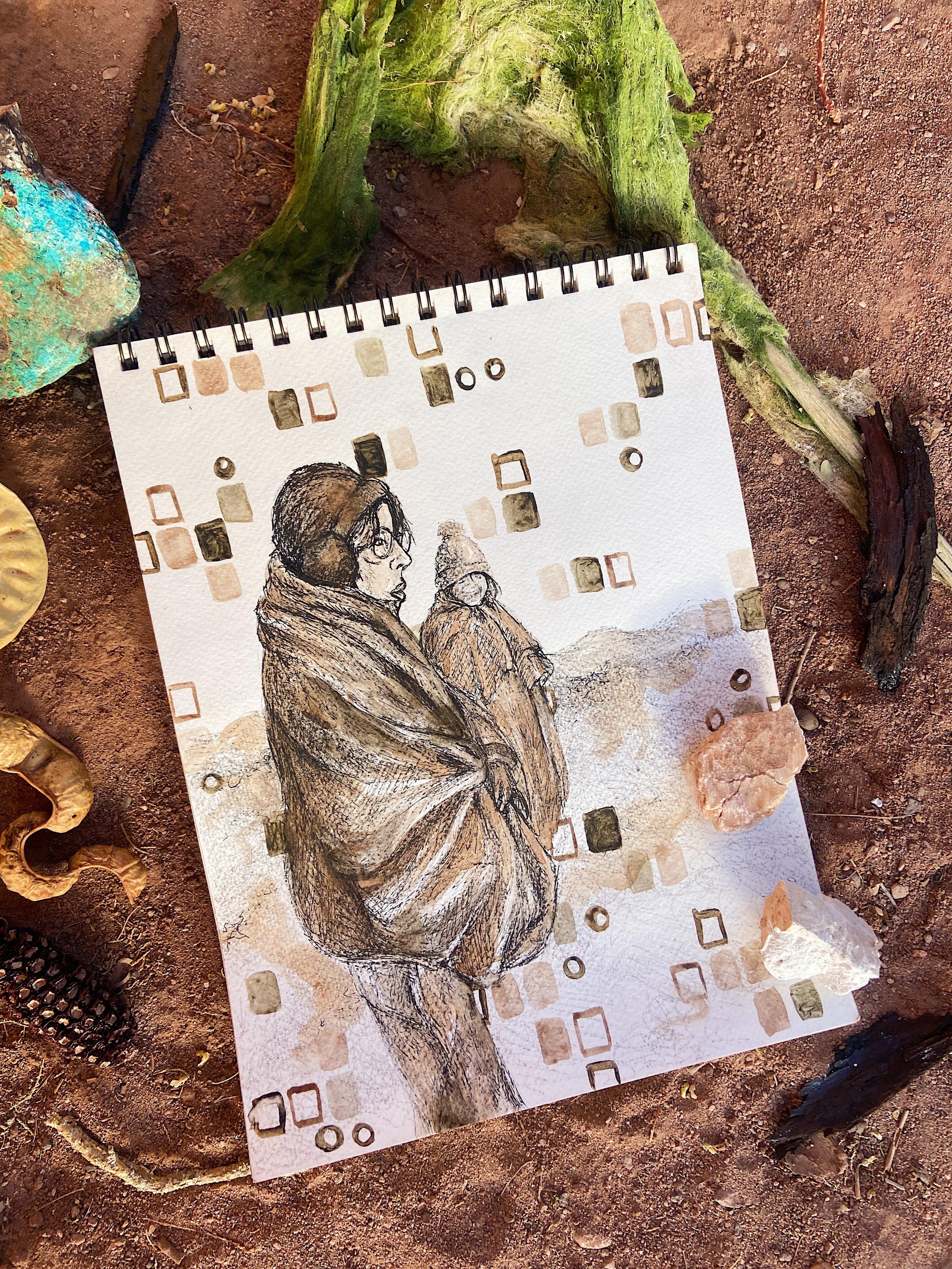ARTIST SERIES: Natural Watercolors with Violeta
If you were to pulverize avocado pits and make watercolors from that powder, what color do you think the pigment would be?
If you guessed pinky-orange, that’s correct. But what about a green leaf? That all depends on which type of “natural colorant” the leaf contains.
The five main colorants that Violeta works with are:
Carotenoids: yellows and oranges
Flavonoids: yellows and oranges
Anthocyanins and Anthocyanidins: subgroup of Flavonoids that produces reds, blues and oranges
Quinones: oranges, purple and scarlet
Indigotin: blues and greens that are produced through oxidation and fermentation (reduction process)
There’s a great website that explains each of these in much better detail .
Cochineal parasite image from Tucson.com
Violeta makes watercolor, or aquarela, pigments from different plants including rose, onion skin, yerba mate, lavender, walnut shells, avocado pits and eucalyptus leaves and bark. While she uses all different kinds of plants to create her pigments, Violeta is especially interested in native plants. “Each region has its own color palette,” she says. “In Chile, for example, we have very few natural sources to make the color red. If you don’t want to use cochineal [a parasitic insect that is found on the Tuna cactus], then there won’t be much red in your palette.”
Let’s think back to the avocado pit pigment. I really asked a trick question because it also depends on when you’re looking at the pigment. Over time, the pigment will likely change as it oxidizes and is exposed to sunlight. According to Violeta, even the time of day that you’re painting matters. In one of her paintings, the yellow pigment intensified over time, while the red color turned to grey. If you really don’t want the color to change, you can “set” the colors using piedra alumbre on cotton clothes for example, but for Violeta, experimentation is part of the process. Another part of the experiment is seeing what happens when you change the pH of the pigment by adding citric acid, copper sulfate, or iron sulfate (see the picture below).
In order from top to bottom: Rose, avocado, quintal, maqui berry, yerba mate, yellow onion, eucalyptus leaves, purple onion
There are three ways of making pigments: maceration, drying or decoction. Maceration takes around 4 weeks, while decoction only needs about 15 minutes. The process depends on the type of plant or material that you are using as a colorant. Today, Violeta showed me how to make watercolors with onion skins using the decoction method. This is one of the fastest natural pigments because onion skins only need to soak in cold water for 24 hours. Violeta collects rainwater or uses distilled water because the mineral content of tap water can also impact the pigment color. The ratio is 40 grams of onion skins to 1 liter 20 ml of water. You have to tear the onion skins into small pieces so as to increase the surface area that is in contact with the water. Tomorrow, Violeta will heat the water and onion skins for 1hr 30 mins at a temperature of 70ºC and then will strain the liquid when it has cooled.
Not only are these pigments incredibly beautiful and delicate (see her work to the left), but they are also better for us. Acrylics and oils contain countless chemicals (many of which are listed carcinogens in California), and synthetic watercolors can also be harmful for our health and the environment. In learning from ancestral knowledge of natural pigments, we are rediscovering that most of these colors are actually better for our health. Violeta has been using pigments from eucalyptus (which has many benefits, including reducing congestion and improving mental clarity) to dye clothes and linens for example, and I imagine that this must be better for our skin than chemical dyes.
After experimenting with making my own dyes during the La Wayaka Current artist residency in the Atacama desert, I can confirm that this actually takes quite a bit of practice and science. As opposed to Violeta’s beautiful, smooth pigments, my first ones were clumpy, muddled and foul smelling. It definitely gave me a greater appreciation for Violeta’s hard work. If you are interested in purchasing her watercolor pigments, message her on instagram here.
If there’s any artist that I’ve met who exudes only good vibes, it’s Violeta. I met her by chance during the Fiestas Patrias in Concepción at a Vegan Fonda (like an open house party), and she was kind enough to give me a mini workshop the next day. Violeta, thank you for sharing your knowledge, materials and time with me, I’ve been loving the watercolors!




















